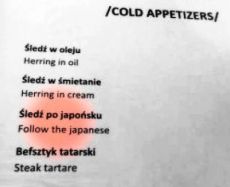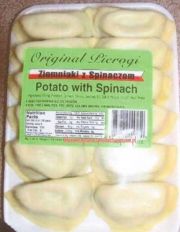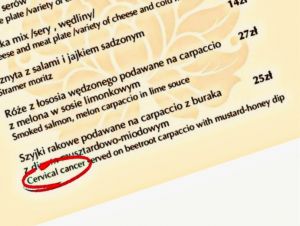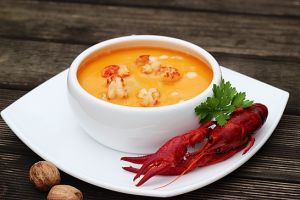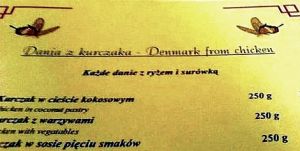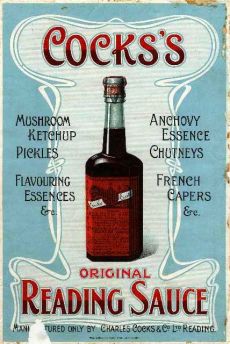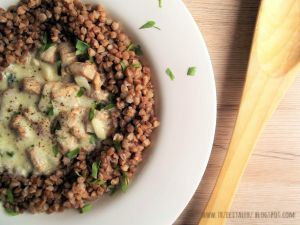Difference between revisions of "A Menu Lost in Translation"
| Line 140: | Line 140: | ||
| wolumin = 70 | | wolumin = 70 | ||
| strony = 101 | | strony = 101 | ||
| − | }}</ref> (see [[Ketchup vs Mustard#Ketchup, “Something Akin to Kabul”|my older post]] for more about the intertwined histories of ketchup and fish sauce). It was soon followed by and | + | }}</ref> (see [[Ketchup vs Mustard#Ketchup, “Something Akin to Kabul”|my older post]] for more about the intertwined histories of ketchup and fish sauce). It was soon followed by and for decades competed with similar sauces, also sold in small bottles with orange labels, like the now more famous Worcestershire sauce. But eventually, the production of Reading sauce in ended in 1962.<ref>{{Cyt |
| nazwisko = Hughes | | nazwisko = Hughes | ||
| imię = Glyn | | imię = Glyn | ||
| Line 149: | Line 149: | ||
| nazwisko = Hylton | | nazwisko = Hylton | ||
| imię = Stuart | | imię = Stuart | ||
| − | | tytuł = | + | | tytuł = A–Z of Reading: Places–People–History |
| rozdział = Sauce | | rozdział = Sauce | ||
| adres rozdziału = https://books.google.pl/books?id=PWAuDwAAQBAJ&lpg=PT95&pg=PT97 | | adres rozdziału = https://books.google.pl/books?id=PWAuDwAAQBAJ&lpg=PT95&pg=PT97 | ||
| Line 156: | Line 156: | ||
}}, illustration</ref> it was never known to be put on heaps of boiled buckwheat. | }}, illustration</ref> it was never known to be put on heaps of boiled buckwheat. | ||
| − | + | Back to square one. You won't be surprised, though, to learn that the "cocks sauce" is the result of mistranslation. The English word "cocks" has multiple meanings and so do the Polish terms ''"kury"'' and ''"kurki"''. The primary meaning of "cocks" is "male domestic fowl", also known as "cockerels" or "roosters". In modern Polish, ''"kury"'' refers to hens, but a few centuries ago it meant "roosters" instead. So was the sauce made from the meat of cockerels? Well, no. | |
| − | |||
| − | |||
| − | File:Kasza gryczana z kurkami.jpg | + | Among the many different meanings of the English "cock", the vulgar term for the male member is particularly well known. The rooster has been a symbol of male virility in many cultures. Among Slavic languages, Bulgarian makes the same association, with ''"kur"'' referring to both the cocky bird and a man's cock (''"patka"'' is another vulgar Bulgarian word for the latter, which makes Bulgarians laugh every time they hear ''"kuropatka''" – which means "partridge" in Russian and "cock-dick" in Bulgarian; gotta love these Slavic false friends). ''"Kur"'' also gave rise to the vulgar word for a prostitute (a woman whose job involves handling penes) in all Slavic languages, including Polish. But I digress; the sauce definitely wasn't made from phalli! |
| − | </ | + | |
| + | Besides, the Polish word was ''"kurki"'', a diminutive form of ''"kury"''. Depending on the context, it could mean little chicks, weathercocks, stopcocks,… But none of these seem to fit into the culinary sphere. So what does? | ||
| + | |||
| + | Chanterelles. Small, peppery, trumpet-shaped mushrooms. Their bright yellow colour might remind you of chicks, which explains why ''"kurki"'' is the common Polish name for them. So there you have it: buckwheat with chanterelle sauce. | ||
| + | |||
| + | The recipe and the photograph below come from the Polish-language cooking blog ''Trzeci Talerz'' (''Third Plate''). | ||
| + | |||
| + | [[File:Kasza gryczana z kurkami.jpg|thumb|Buckwheat with <s>cocks</s> chanterelle sauce]] | ||
| + | |||
| + | {{Cytat | ||
| + | | | ||
| + | * 200 g buckwheat | ||
| + | * 250 g chanterelles | ||
| + | * 3 cloves garlic | ||
| + | * 2 tbsp butter | ||
| + | * 200 g thick cream | ||
| + | * 500 ml stock | ||
| + | * pepper, salt | ||
| + | * 1 tbsp wheat flour (optional) | ||
| + | * parlsey | ||
| + | Slice garlic cloves and sauté them in butter, then add chopped chanterelles. Add stock and stew the mixture on low fire for about 30 minutes. Blend in cream, which you may first mix with flour to make the sauce thicker. Add salt and pepper to taste. Cook for a few more minutes. Boil buckwheat in salted water {{...}} Serve doused with the sauce and sprinkled with chopped parsley. | ||
| + | | oryg = <div> | ||
| + | * 200 g kaszy gryczanej | ||
| + | * 250 g kurek | ||
| + | * 3 ząbki czosnku | ||
| + | * 2 łyżki masła | ||
| + | * 200 g gęstej śmietany | ||
| + | * 500 ml wywar z rosołu - bulionu (włoszczyzna, mięso z kością) | ||
| + | * pieprz, sól | ||
| + | * 1 czubata łyżka mąki pszennej do zagęszczenia (opcjonalnie) | ||
| + | * natka pietruszki do dekoracji </div> | ||
| + | Czosnek kroimy w plasterki i chwilkę dusimy go na maśle, po czym dodajemy pokrojone kurki. Dolewamy wywar rosołowy i dusimy na małym ogniu około 30 minut. Zaprawiamy śmietaną, którą można wymieszać z mąką, by sos był bardziej zawiesisty. Dodajemy sól i pieprz do smaku. Gotujemy kilka minut. Kaszę gotujemy w posolonej wodzie {{...}} Podajemy ją polaną sosem i posypaną posiekaną natką pietruszki. | ||
| + | | źródło = {{Cyt | ||
| + | | nazwisko = | ||
| + | | imię = | ||
| + | | tytuł = Trzeci Talerz: Podkarpacki blog kulinarny | ||
| + | | rozdział = Kasza gryczana z kurkami – kuchnia podkarpacka | ||
| + | | adres rozdziału = https://trzecitalerz.blogspot.com/2018/08/kasza-gryczana-z-kurkami-kuchnia.html | ||
| + | | rok = 2018 | ||
| + | }}, own translation }} | ||
== Ice Cream with Barrister == | == Ice Cream with Barrister == | ||
| Line 168: | Line 205: | ||
== Apple Pie Guilty == | == Apple Pie Guilty == | ||
[https://www.doradcasmaku.pl/przepis-jablka-w-ciescie-z-winem-39777 Jabłko w cieście winnym] | [https://www.doradcasmaku.pl/przepis-jablka-w-ciescie-z-winem-39777 Jabłko w cieście winnym] | ||
| + | |||
| + | {{Przypisy}} | ||
|} | |} | ||
Revision as of 01:43, 23 February 2022
On this first day of April, I'd like to propose a special dinner menu composed entirely of authentic Polish specialities. All of these dishes have been gleaned from actual English-language menus of various restaurants across Poland. Enjoy!
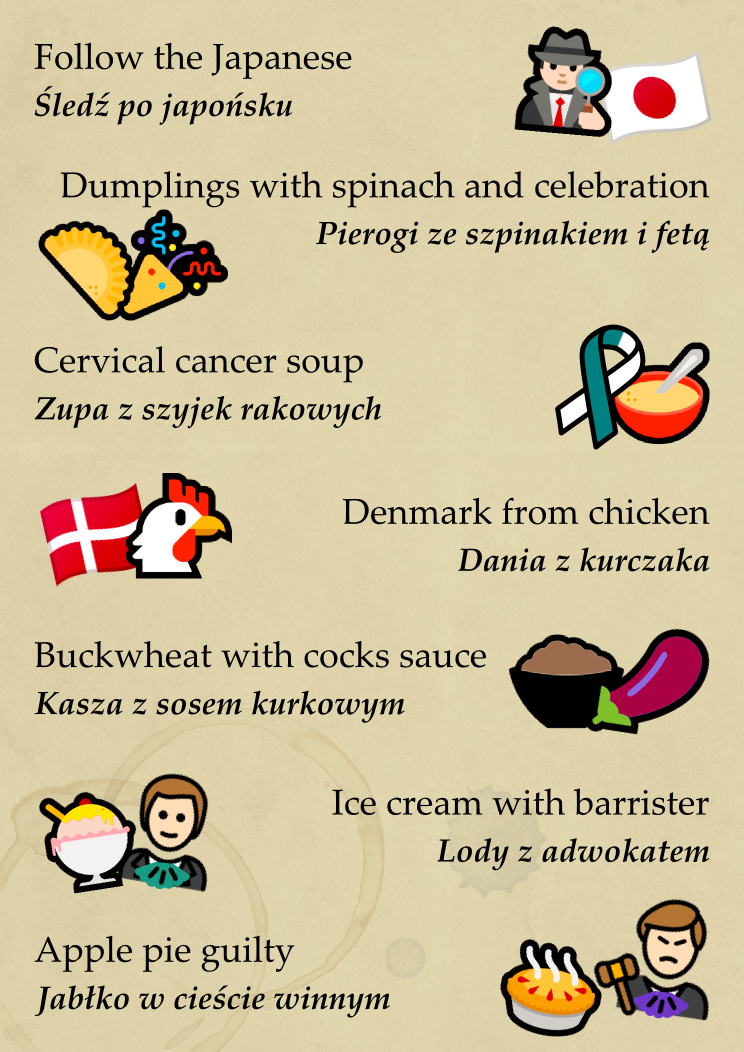
|
Oops, it looks like someone used a machine translator to render the Polish menu into English. Believe it or not, even some relatively upscale restaurateurs do this without even having the menu proof-read by someone who actually speaks English. The results are sometimes hilarious, sometimes just confusing, and some are downright off-putting to any visiting foreign tourist. Again, all of the mistranslations above found their way into actual restaurant menus (though never all at once)!
So, have you figured out what they were supposed to mean? You can type your guesses as comments to this Facebook post. Unless you speak Polish, of course, then you don't need to guess.
And if you're ready to see the correct answers, click "Show actual meanings" below!
Follow the Japanese
Let's start with where the confusion came from. The Polish word "śledź" (pronounced: shletch) is the imperative mood of the verb "śledzić", meaning "to follow", "to trace" or "to spy". But it's also got another, completely unrelated, meaning, which would be more fitting in this context: it's "herring". So a better translation of "śledź po japońsku" would have been "herring in the Japanese style ". Now what the heck is that?
The Japanese-style herring is a very appetising appetiser that was quite popular in Communist Poland. The recipe largely boils down to wrapping a marinated herring fillet around a hard-boiled egg. Perhaps the idea of wrapping a piece of uncooked fish around something reminded someone of maki sushi rolls, giving rise to its association with Japanese cuisine? Otherwise, this Polish invention has about as much to do with Japan as Hawaiian pizza has to do with Hawaii.
The egg and the fish are typically arranged on a bed of canned green peas laced with mayo and decorated with slices of onions and pickles. The marriage of fishy, salty, sour and fatty flavours means that this simple hors d'œuvre pairs perfectly with a shot of cold neat vodka.
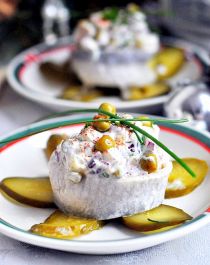
Ingredients (serves 5):
Hard-boil and peel the eggs. Strain the peas. Slice the onion and the cucumbers. Mix the peas with some of the mayonnaise and arrange it on a platter or little plates for individual helpings. Wrap the eggs in herring fillets and place on the bed of peas. Decorate with onion slices powdered with paprika, cucumber slices and squirts of mayonnaise. A single helping should weigh 100 g [3.5 oz], including 20 g [0.7 oz] of herring. | ||||
— [2]
Original text:
|
Dumplings with Spinach and Celebration
After the cold starter it's time for a hot one: pierogi ze szpinakiem i fetą, or dumplings with spinach and, um… celebration?
Pierogi, the delicious Polish stuffed and boiled dumplings, often go hand in hand with celebration, that's true. One kind, sauerkraut-and-mushroom pierogi, is traditionally served at the Christmas Eve dinner. In fact, the very word "pierogi" comes from "*pirŭ", the Proto-Slavic term for a feast. Pierogi are a celebratory food par excellence.
But the spinach in our pierogi wasn't mixed with feta, the Polish equivalent of a fête, but with feta, the Greek brined cheese. Add some garlic and you're going to have a truly delightful pierogi filling. While not as classic as potato-and-cheese, ground-meat or mushroom-and-kraut varieties, spinach-filled pierogi are nonetheless both tasty and popular.
And, well, it could have been worse. After all, it's not only Polish businesses catering to English-speaking patrons that make translation mistakes; the same may happen to U.S. businesses selling supposedly Polish food to Polish Americans. Like the one that confused the Polish words "szpinak" ("spinach") and "spinacz" ("paper clip"). Office-supplies pierogi, anyone?
[Przepis na pierogi ze szpinakiem i fetą]
Cervical Cancer Soup
No Polish dinner is complete without a bowl of soup, so now, after we've had the starters, what would you say to the exquisite 19th-century Polish delicacy known as cervical cancer soup? Wait, what?
A British tourist in Poznań who once found another "cervical cancer" dish on the menu had this to say about the experience:
| No one I know has had cervical cancer, but I can imagine that if it had been seen by somebody else, they might have been well upset. As it was, I quickly lost my appetite; the meaning doesn’t exactly encourage you to order anything, does it? |
| — Owen Durray, quoted in: [3] |
The restaurant's spokesperson said they would be "having a word with [their] translator". By which, I suppose, they meant they would be trying to hold a conversation with Google Translate.
Let's see what happened here step by step. The original Polish name for the key ingredient is "szyjki rakowe" (pronounced: shiy·kee Rah·kaw·veh). "Szyjki" could be literally translated as "little necks", but in this case it refers to crayfish tails (which, technically, are neither tails nor necks, but abdomina). "Rak", the Polish word for crayfish, is also used for most things that the English language refers to by the Latin word for "crab", that is, "cancer" – such as the Zodiac sign and, yes, the disease too. And specifically, "rak szyjki macicy", or "cancer of the neck of the womb", is the Polish medical term for cervical cancer. "Szyjki rakowe" and "rak szyjki" may look and sound similar, but the difference in meaning is that between delicious and disgusting.
In any case, if you haven't sampled crayfish soup, then you definitely should give this classic Polish dish a try! Throwing the poor crustaceans live into boiling water may seem cruel, but it's actually the most humane way of killing them as they die instantly.
Wash and brush the crayfish thoroughly, throw them live into boiling water with salt and dill. Cook under cover for 6 minutes. The crayfish will turn deep red during cooking. Once cooked and chilled, scoop out the meat. […] Bleach almonds with boiling water and remove the skins. Wash rice, cover with boiling water and cook until tender, then strain and place in the poultry broth. Add the crayfish meat, almonds, cream and bring to boil, then mix in the yolks, chopped dill and season to taste. | ||||
— Maciej Kuroń: Kuchnia polska: Kuchnia rzeczypospolitej wielu narodów, Jacek Sanatorski, 2004, p. 210, own translation
Original text:
|
Denmark from Chicken
Is this some kind of Nordic version of chicken Kiev? Not really. You see, "Dania" (with capital D) is the Polish name for the country of Denmark. But "dania" (with lower-case D and a marginally different pronunciation) is the Polish word for dishes or courses. So "dania z kurczaka" is not so much a single preparation as it's the title of a whole section of a menu, devoted to chicken dishes in general. And it has nothing whatsoever to do with the state of Denmark.
I suppose you still expect a recipe, though, don't you? Okay, so let's pick what is perhaps the most Polish chicken dish you can find, which is the kurczę pieczone po polsku, or liver-stuffed roasted chicken in the Polish style.
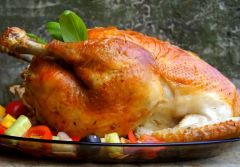
[Przepis na kurczę po polsku]
Buckwheat with Cocks Sauce
This one sounds intriguing, doesn't it? Some older folks in England might remember Cocks's Reading Sauce. And no, it wasn't used to make reading about cocks more enjoyable. It was a brand of fish sauce produced in the Berkshire town of Reading by a fishmonger whose name was James Cocks (and his heirs after him). First marketed in 1802, it was made from fermented anchovies, walnut ketchup, mushroom ketchup, soy sauce, salt, garlic and chilli peppers[1] (see my older post for more about the intertwined histories of ketchup and fish sauce). It was soon followed by and for decades competed with similar sauces, also sold in small bottles with orange labels, like the now more famous Worcestershire sauce. But eventually, the production of Reading sauce in ended in 1962.[2] So it's unlikely that this is the sauce that was meant by the menu I saw in one Polish roadside inn. Besides, while Cocks's condiment was advertised to go well with "game, wild fowl, hashes, rump steaks and cold meat",[3] it was never known to be put on heaps of boiled buckwheat.
Back to square one. You won't be surprised, though, to learn that the "cocks sauce" is the result of mistranslation. The English word "cocks" has multiple meanings and so do the Polish terms "kury" and "kurki". The primary meaning of "cocks" is "male domestic fowl", also known as "cockerels" or "roosters". In modern Polish, "kury" refers to hens, but a few centuries ago it meant "roosters" instead. So was the sauce made from the meat of cockerels? Well, no.
Among the many different meanings of the English "cock", the vulgar term for the male member is particularly well known. The rooster has been a symbol of male virility in many cultures. Among Slavic languages, Bulgarian makes the same association, with "kur" referring to both the cocky bird and a man's cock ("patka" is another vulgar Bulgarian word for the latter, which makes Bulgarians laugh every time they hear "kuropatka" – which means "partridge" in Russian and "cock-dick" in Bulgarian; gotta love these Slavic false friends). "Kur" also gave rise to the vulgar word for a prostitute (a woman whose job involves handling penes) in all Slavic languages, including Polish. But I digress; the sauce definitely wasn't made from phalli!
Besides, the Polish word was "kurki", a diminutive form of "kury". Depending on the context, it could mean little chicks, weathercocks, stopcocks,… But none of these seem to fit into the culinary sphere. So what does?
Chanterelles. Small, peppery, trumpet-shaped mushrooms. Their bright yellow colour might remind you of chicks, which explains why "kurki" is the common Polish name for them. So there you have it: buckwheat with chanterelle sauce.
The recipe and the photograph below come from the Polish-language cooking blog Trzeci Talerz (Third Plate).
Slice garlic cloves and sauté them in butter, then add chopped chanterelles. Add stock and stew the mixture on low fire for about 30 minutes. Blend in cream, which you may first mix with flour to make the sauce thicker. Add salt and pepper to taste. Cook for a few more minutes. Boil buckwheat in salted water […] Serve doused with the sauce and sprinkled with chopped parsley. | ||||
— Kasza gryczana z kurkami – kuchnia podkarpacka, in: Trzeci Talerz: Podkarpacki blog kulinarny, 2018, own translation
Original text:
|
Ice Cream with Barrister
Apple Pie Guilty
References
- ↑ T.A.B. Corley: The Celebrated Reading Sauce: Charles Cocks & Co. Ltd. 1789–1962, in: Berkshire Archaeological Journal, 70, 1979–80, p. 101
- ↑ Reading Sauce, in: Glyn Hughes: Foods of England
- ↑ Sauce, in: Stuart Hylton: A–Z of Reading: Places–People–History, Amberley Publishing Limited, 2017, illustration
|}
